Arctic Summer – “Back in the Northlands Again”
I started writing this somewhere just inside the Lofoten Wall, that string of islands sheltering the North Norway coast from the full force of the winter Atlantic. We are well inside the Arctic Circle. The air temperature is a balmy 21 degrees C.
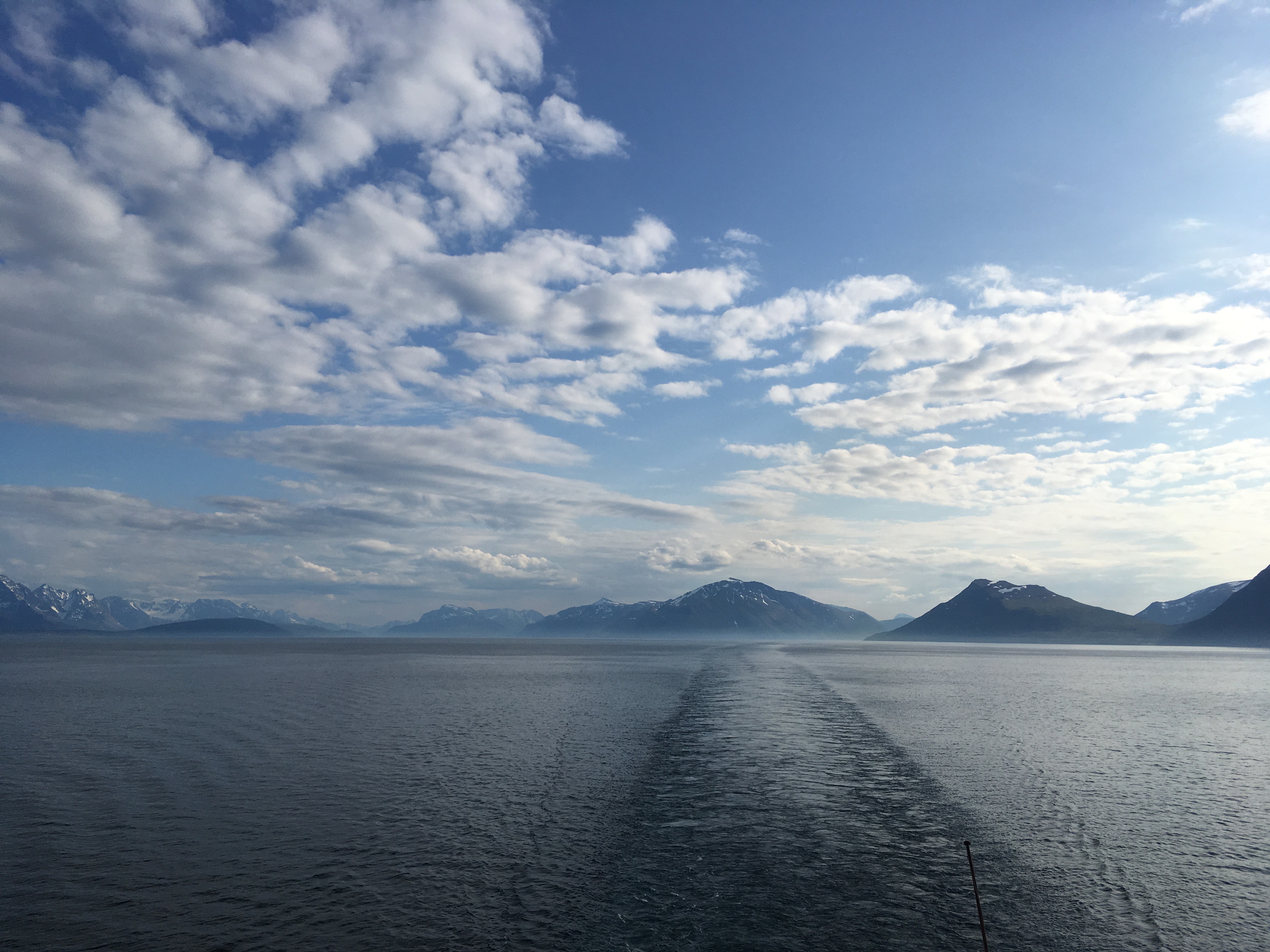
Two fin whales have just gone past the ship on their way north. And yes, you have guessed: I am lecturing on a cruise ship, not, as once upon a wonderful time, helping to bring back a small and occasionally uncomfortable boat from the Arctic. As a matter of fact, this is the second cruise this summer: the first was round Iceland, while this one has been up to one of my very favourite places, Spitsbergen, via the very north of Norway.
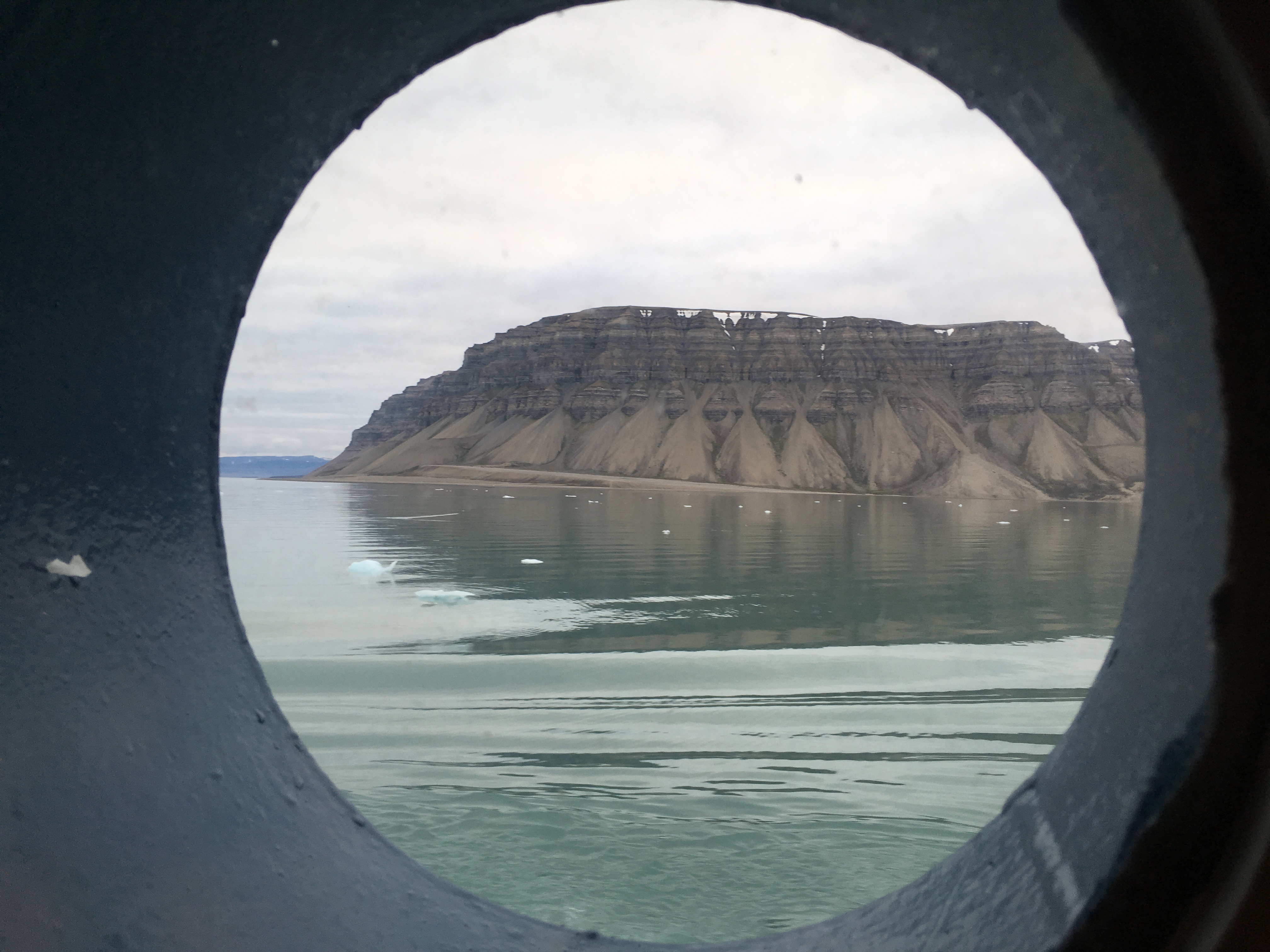
Spitsbergen is special: going there decades ago was one of the turning points of my life. As usual the clientele on board has divided itself into three groups: those who do nothing outside and might as well be anywhere provided copious food arrives regularly; those whose sole delight is in bridge or scrabble or line dancing or whatever; and those who come to every lecture good, bad and indifferent, don’t always fall asleep, and for many of whom this trip is the experience of a lifetime, a game changer, a turning point in how they think about the world. I have seen tears in eyes when they see a pod of humpback whales feeding, even breaching, totally unconcerned at our presence – and who can blame them?
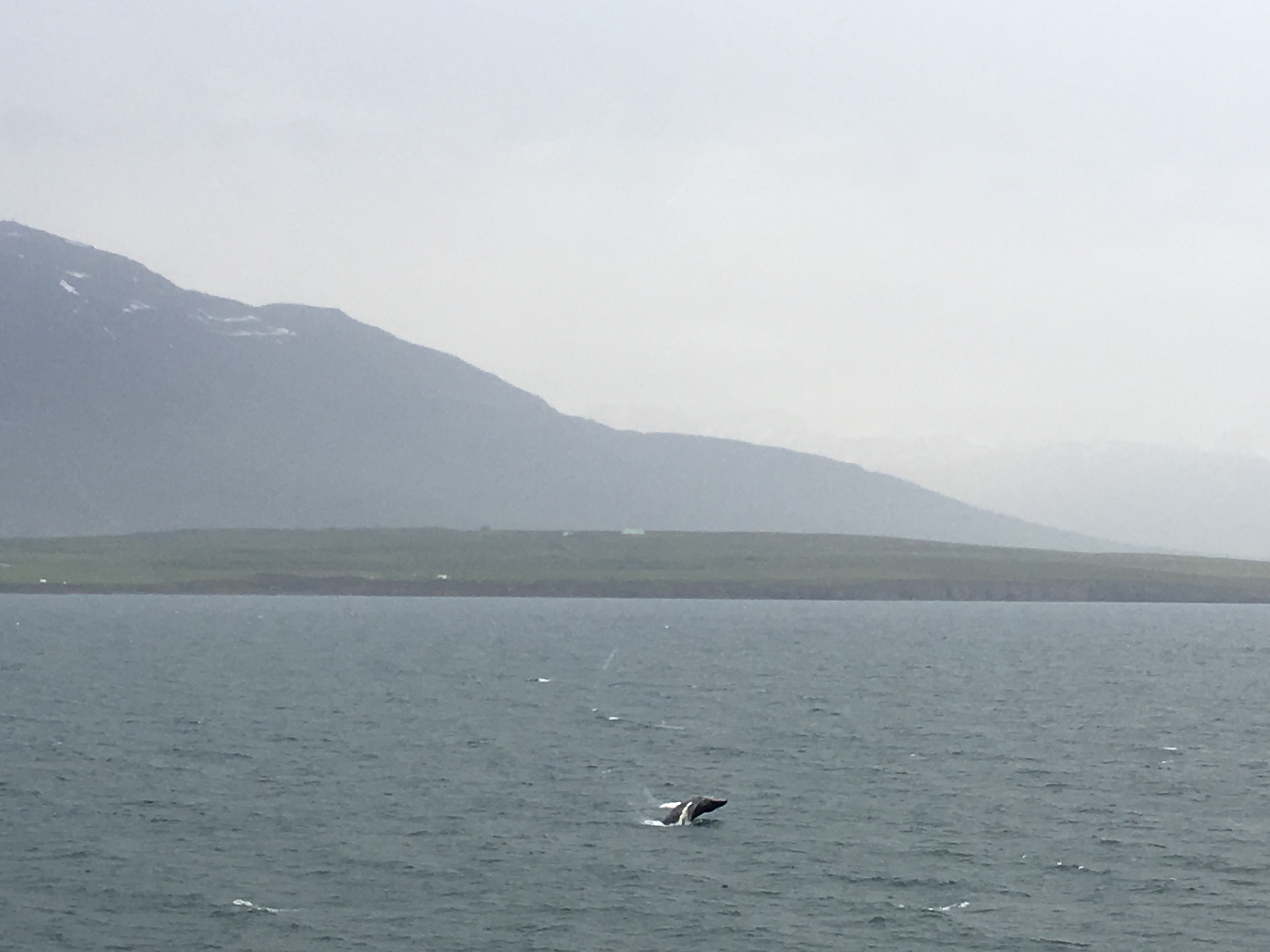
There are those – you can see it in their faces – who find eternity in a grain of sand on a Spitsbergen moraine; those for whom the majesty of the crevassed glacier front of one of the big glaciers, where it calves into the sea, is a source of awe.
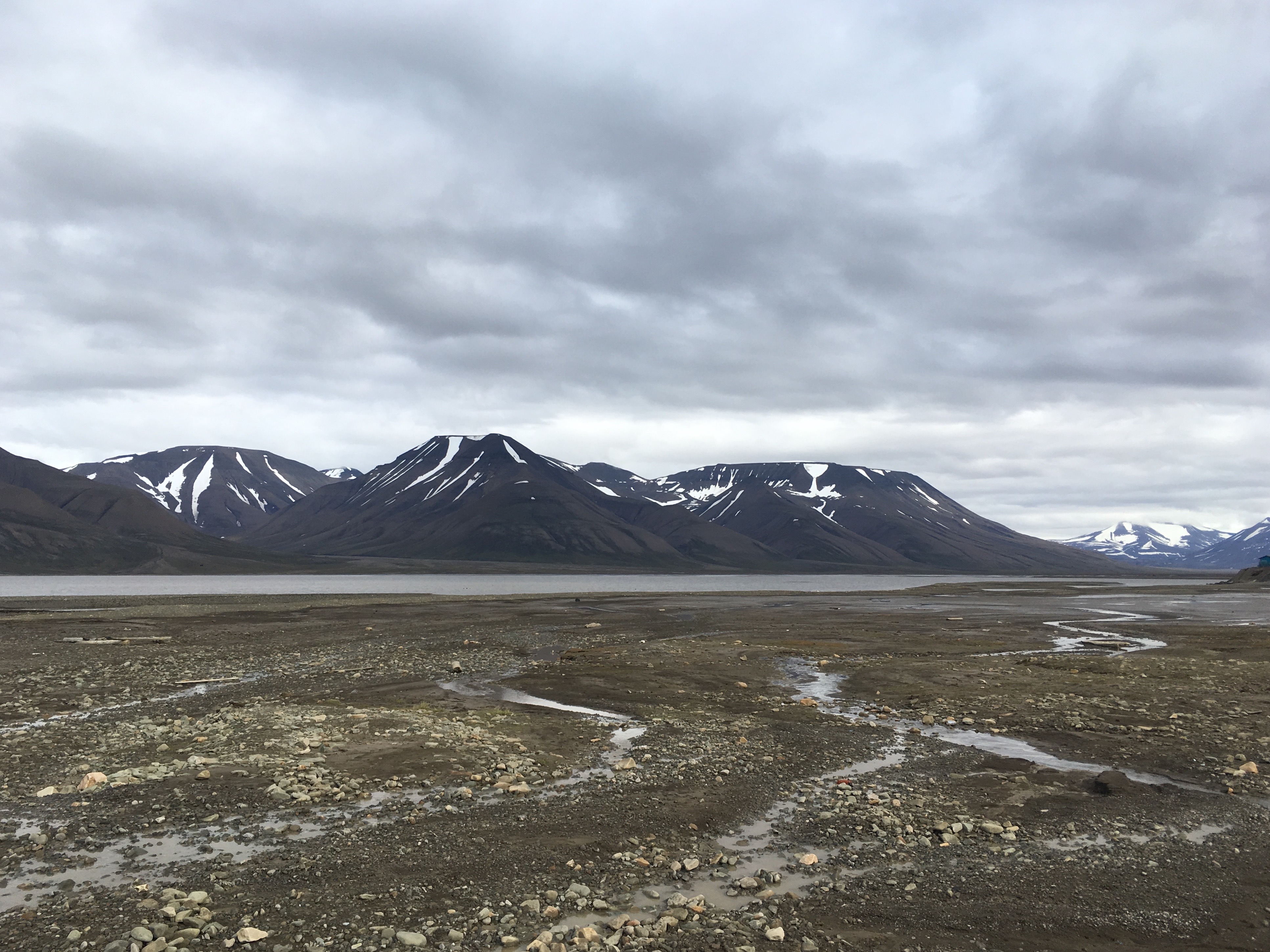
Of the middle group – well: on one occasion I was standing on deck as we went early one morning into Longyearbyen. A man came to me, and said, ‘Tell me, it is 24 hours daylight now, is it not?’ ‘Yes,’ I said. ‘And in winter it is 24 hours of dark? ‘ Yes’. ‘On what date does it switch over?’ There was another lady who wanted her money back for a trip because she had only seen one reindeer and on a pouring wet day the windows of the bus had been dirty; and then there was just yesterday a phone conversation eagerly overheard as we lay off Barentsburg, the Russian coal mining station. ‘Well, I am not sure where we are exactly, but we are at a place called Barentsburg, and that is north of Longyearbyen [not so!], and Longyearbyen is at 78 degrees north, which is where the north pole is, so we must be north of the north pole…’
It has been so good to be in the northlands again.
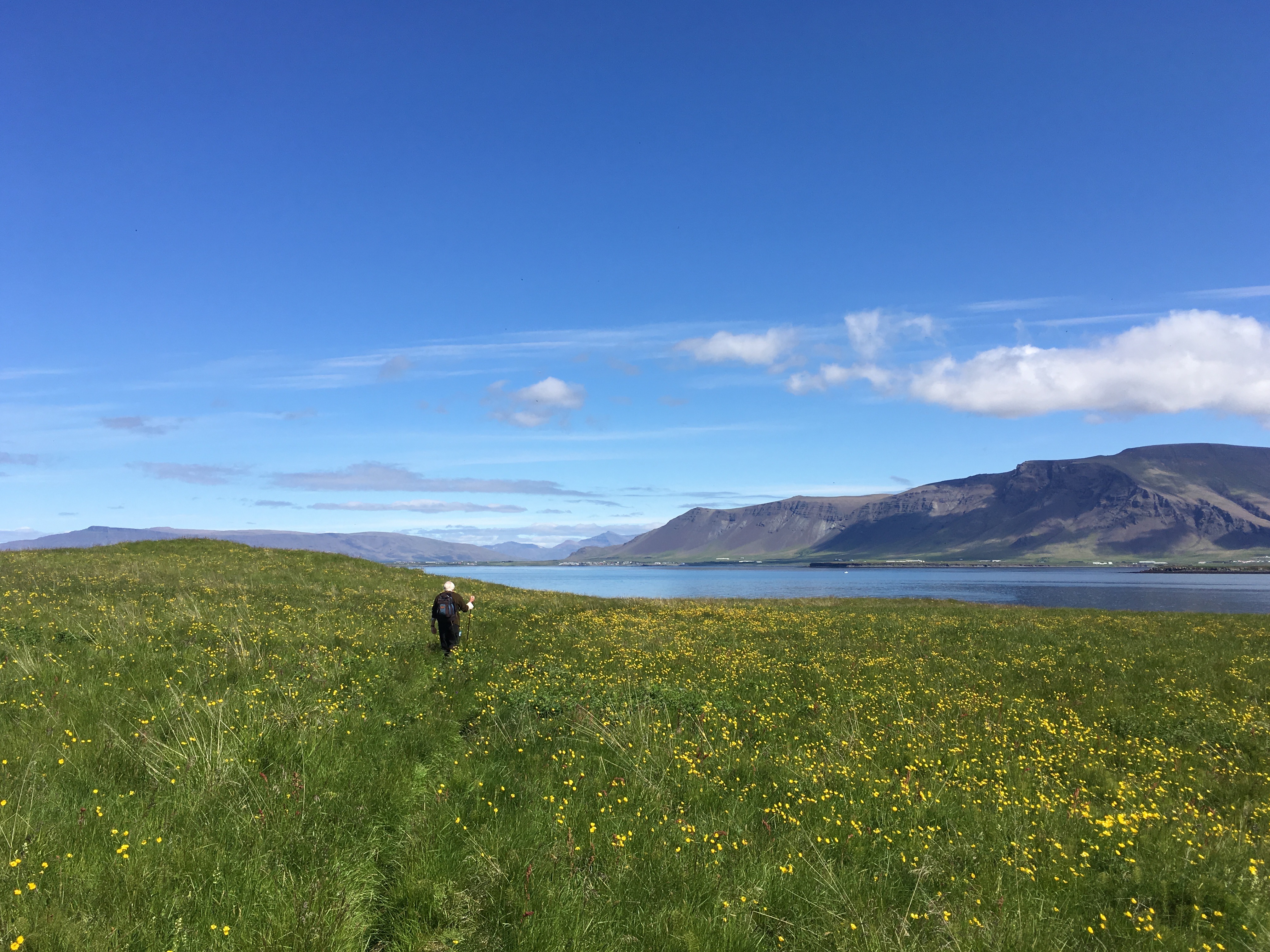
In Iceland My Lady of the Needles and I had a magical day on the little island of Vithey, alone, just us and the red necked phalarope who seemed to enjoy our company – and the terns who did not.
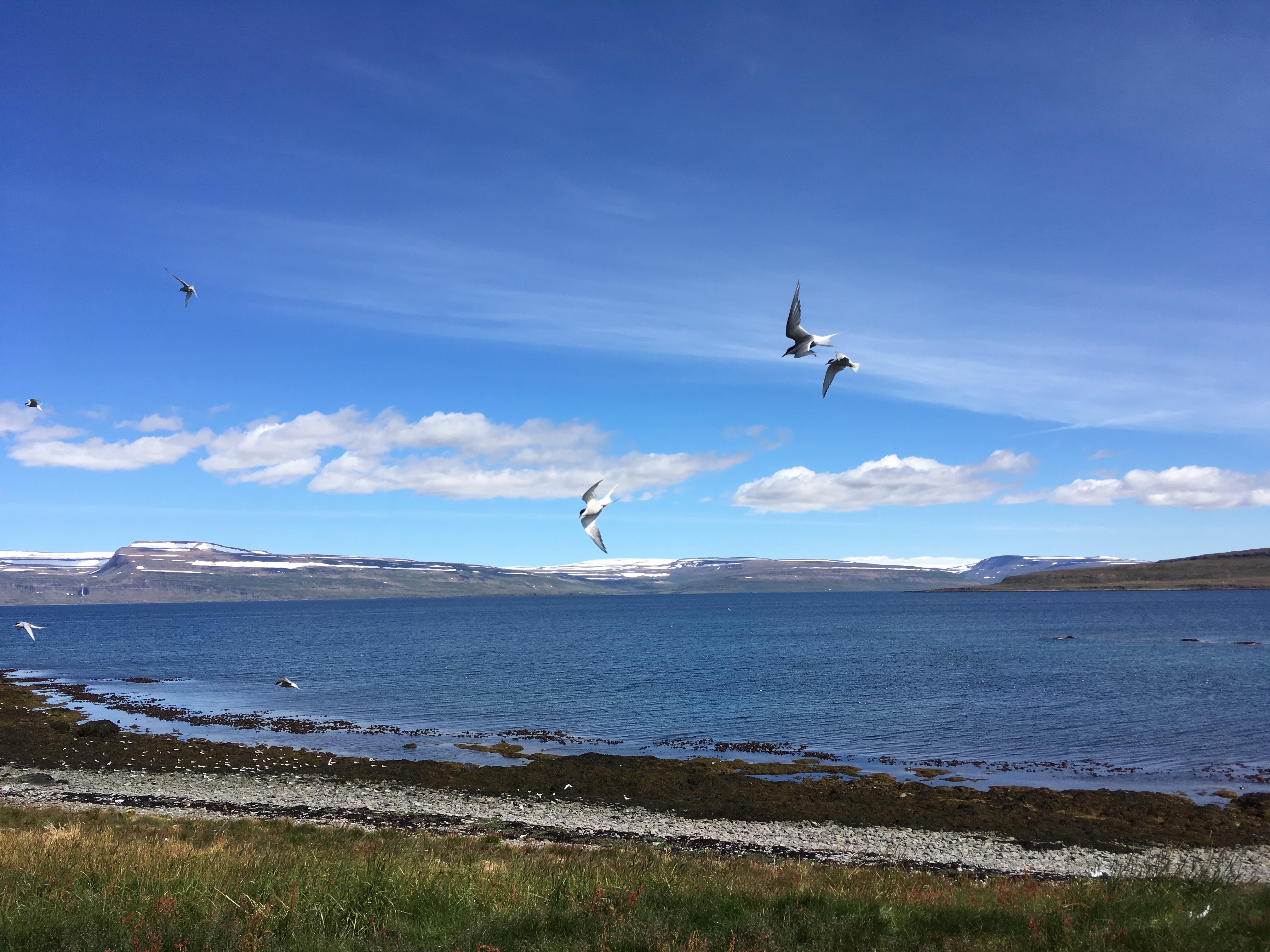
At Myvatn she saw a Great Northern Diver, and I spotted a Slavonian Grebe on its nest. In Spitsbergen I was able to show her, and to some extent embed in her memory, places, like Brucevyen or Gipsvika, I had not seen since that first expedition decades back, and which had been so significant, joyfully and not so, to me.
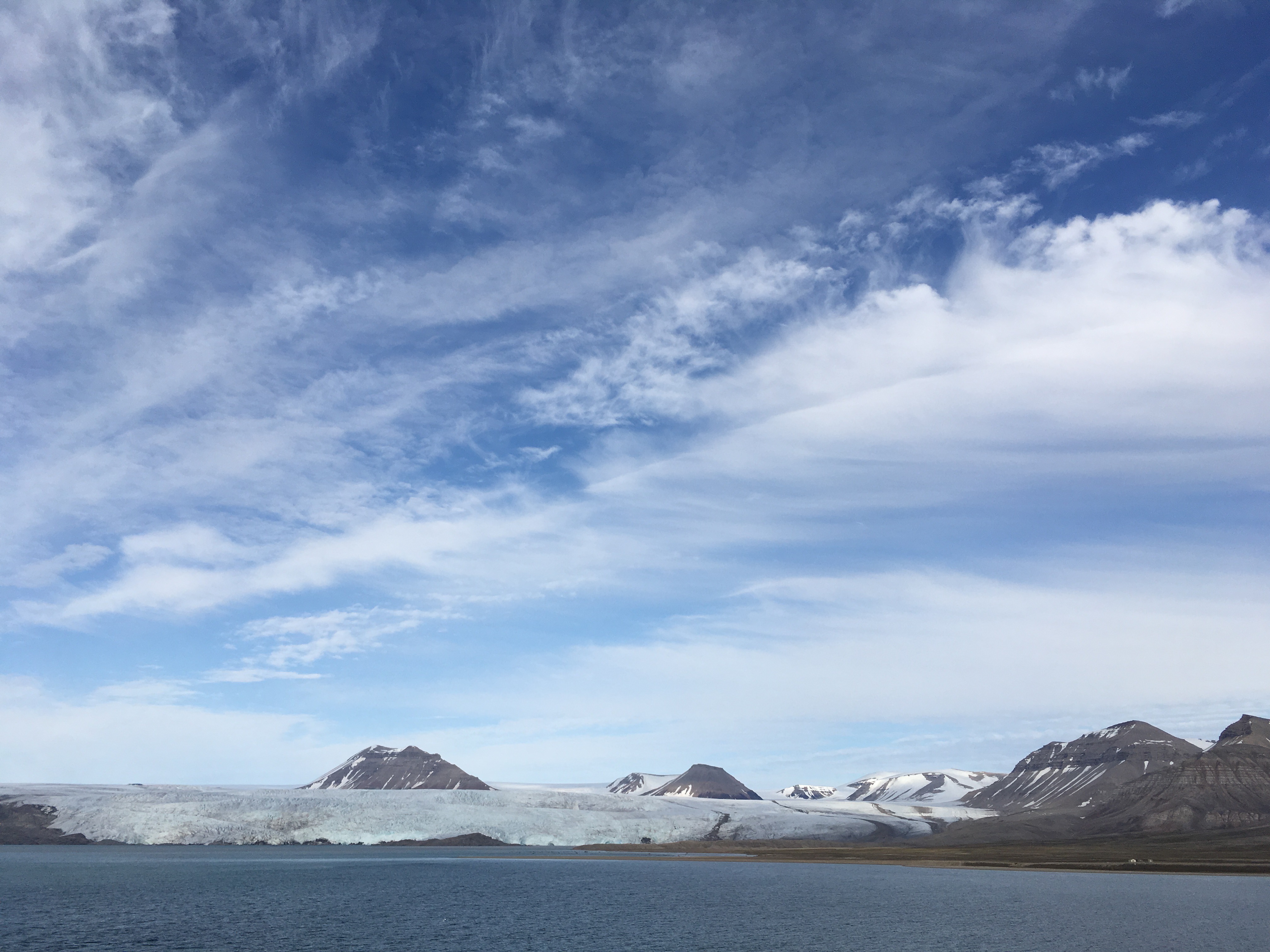
And she has been able to see many, many whales before whose majesty one can only bow and at whose treatment by us humans we can only grieve. For thanks to the research of the last thirty years, it is now as clear as day that we are not the only intelligent species on this planet, with language, music, what we have to call poetry, emotions, family structures, memories, joy and grief. Very clearly the great whales have all those things. That alters the moral goalposts sharply, and makes continued whaling by the Norwegians, the Japanese – who have just resumed it – and the Icelanders a repugnant atrocity that is a disgrace to a so called civilised nation. There is no other word. What might have been permissible once, in ignorance – though William Scoresby’s son, Anglican clergyman and FRS, did begin to recognise the power of a whale’s maternal affection – is certainly not so now
Visiting the far north year on year is not a comfortable thing to do even if I love it. Its heart-stopping beauty, its light like the first morning of the world… But each year I go there the signs of our degradation of our home become more and more apparent. Global heating; pollution by subtle poisons from PCBs downwards, so that whale’s milk can be poisonous to their calves; seals and whales tangled in discarded nylon fishing nets; a herring gull seen with its neck nearly throttled by one of those plastic things that holds four cans of beer together. And the thinning, thinning, thinning of the ice that is a key in our planet’s thermostat, as in the Mer de Glace where I stood six weeks ago, shocked at seeing it so shrunken after a mere three decades.
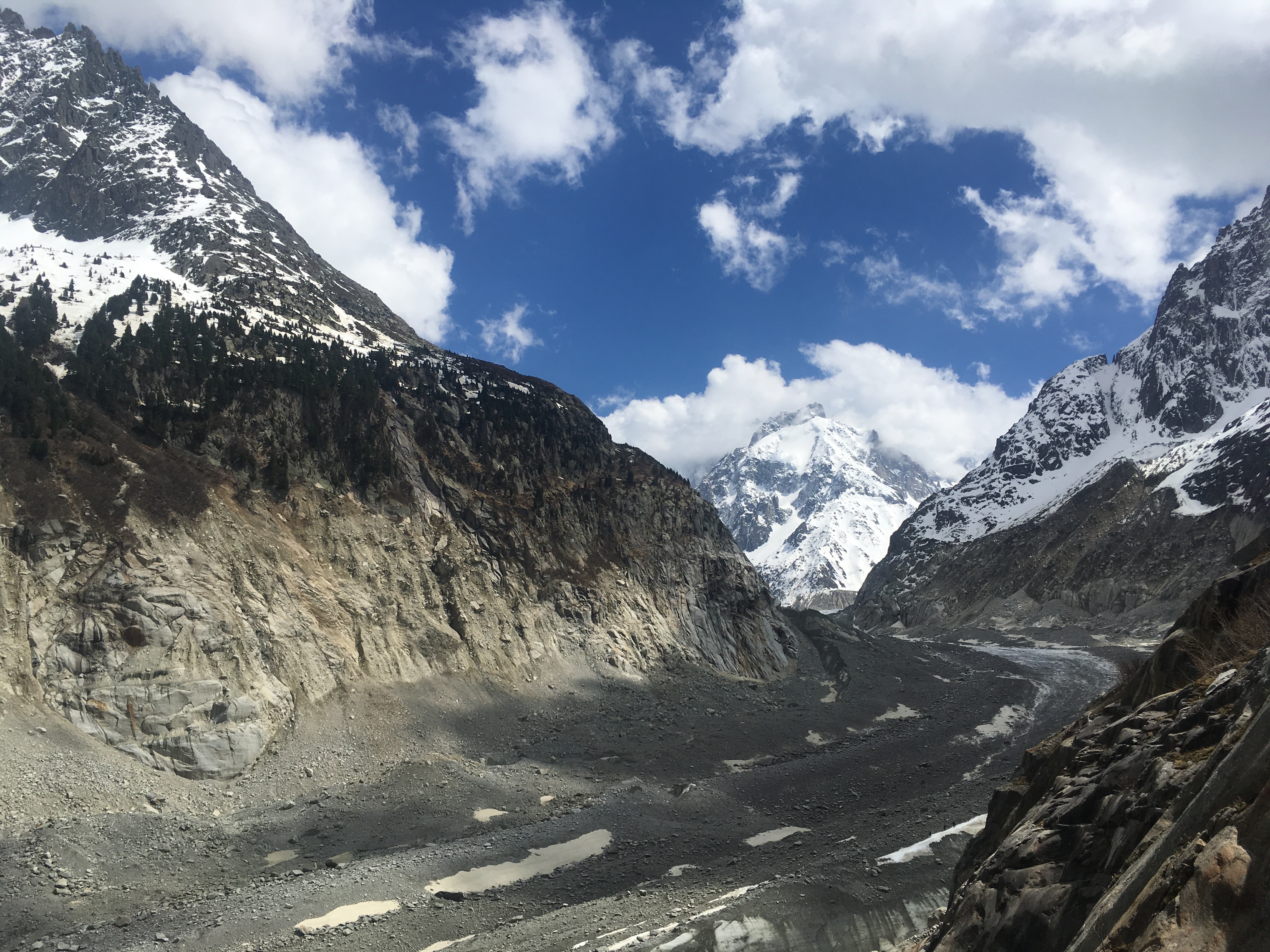
We stood silent on deck near midnight one evening when the ship was anchored off the huge icefront of Van Post Breen, and in the silence we heard the brash ice crackling, popping, ?talking as it melted in the salt water. Ten thousand years since it was rain or snow gone in an hour.
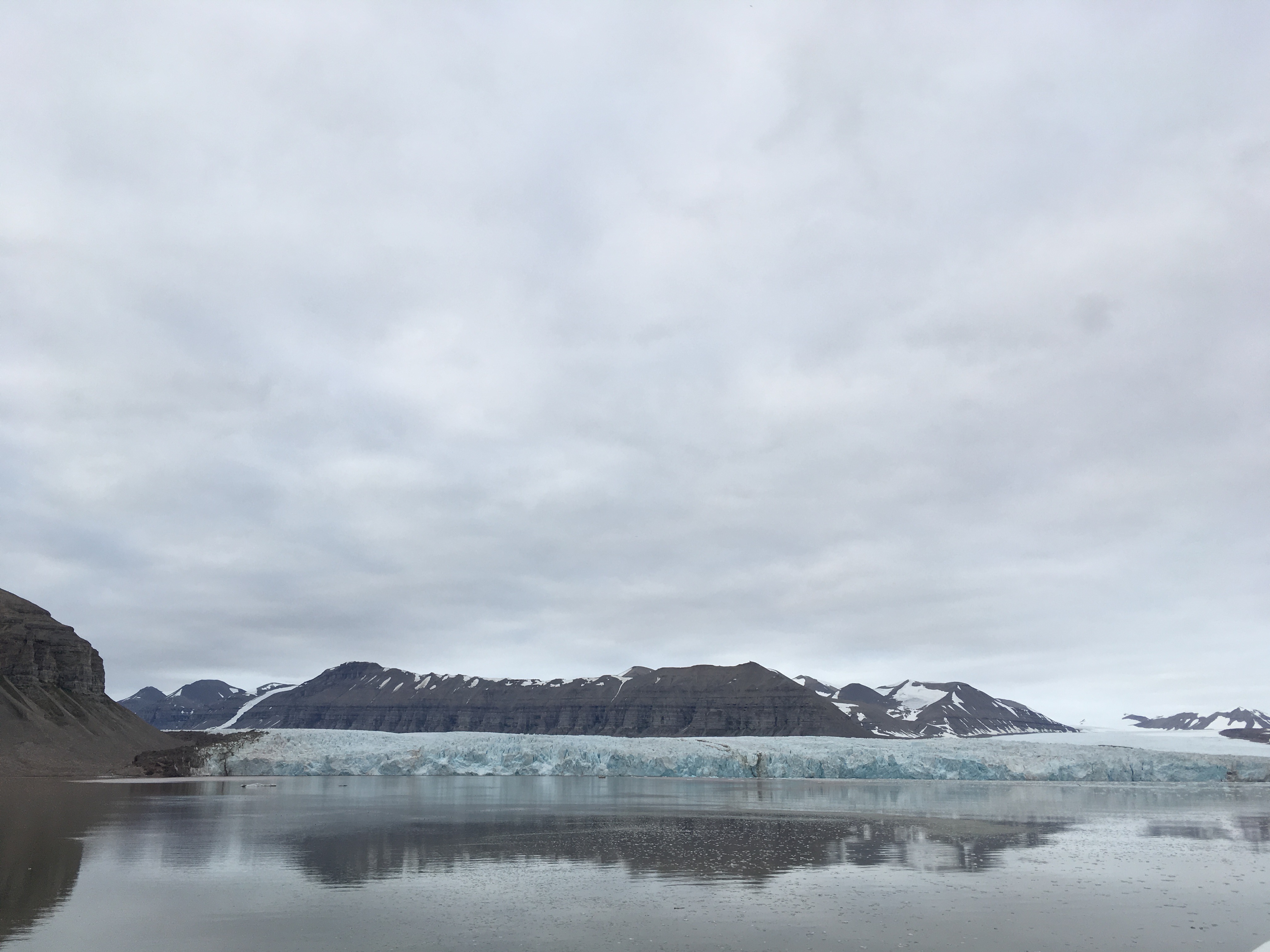
At Honningsvåg, up near the North Cape, we saw, again, the reindeer which the Saami people – once we called them Laplanders – swim over each year to feed on the rich tundra of Magerøy – as they have done for hundreds if not thousands of years.
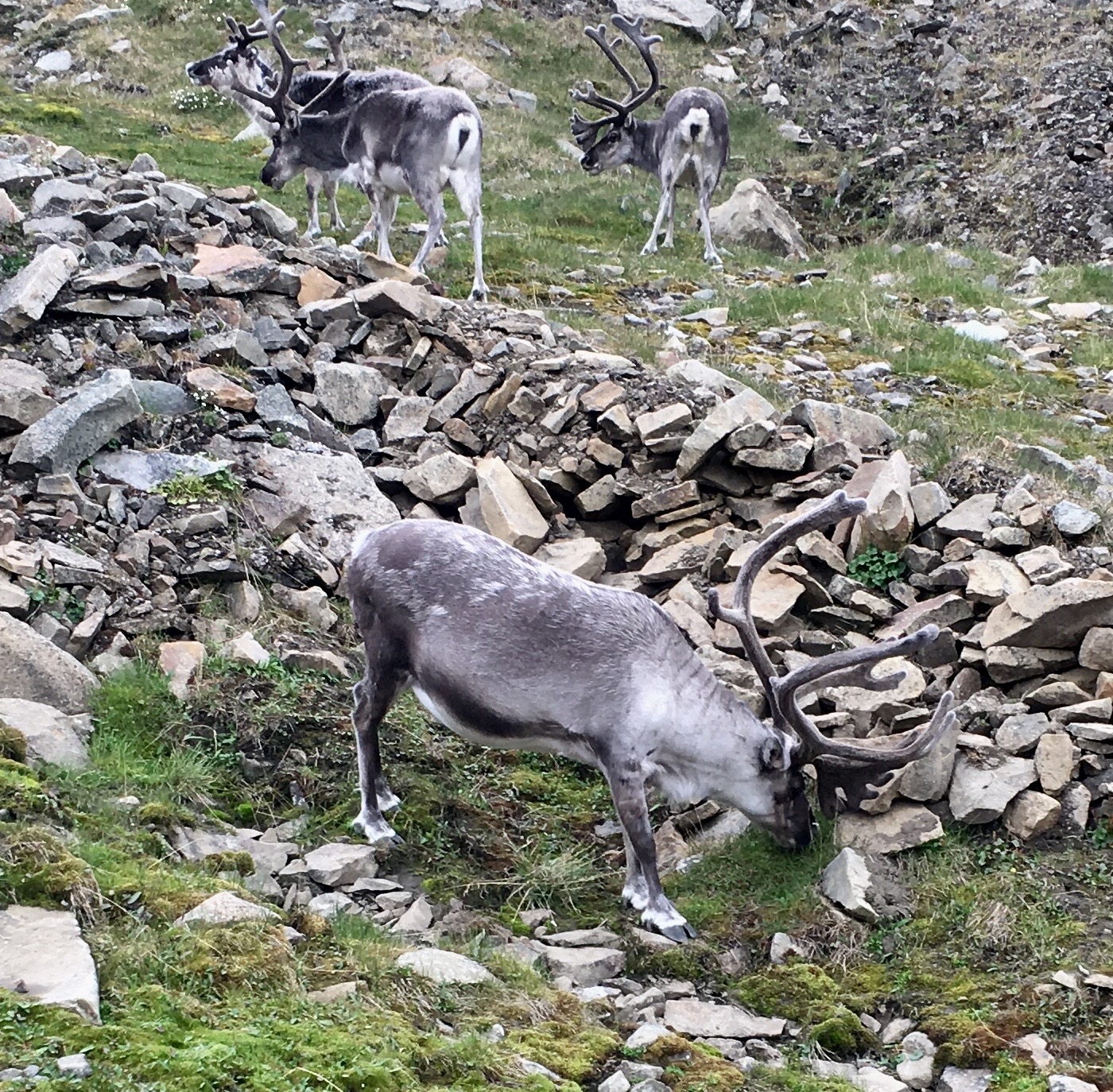
They can’t let them eat the mosses now, in autumn, as they used to for centuries, for the fallout of caesium 37 from Chernobyl is still potent.
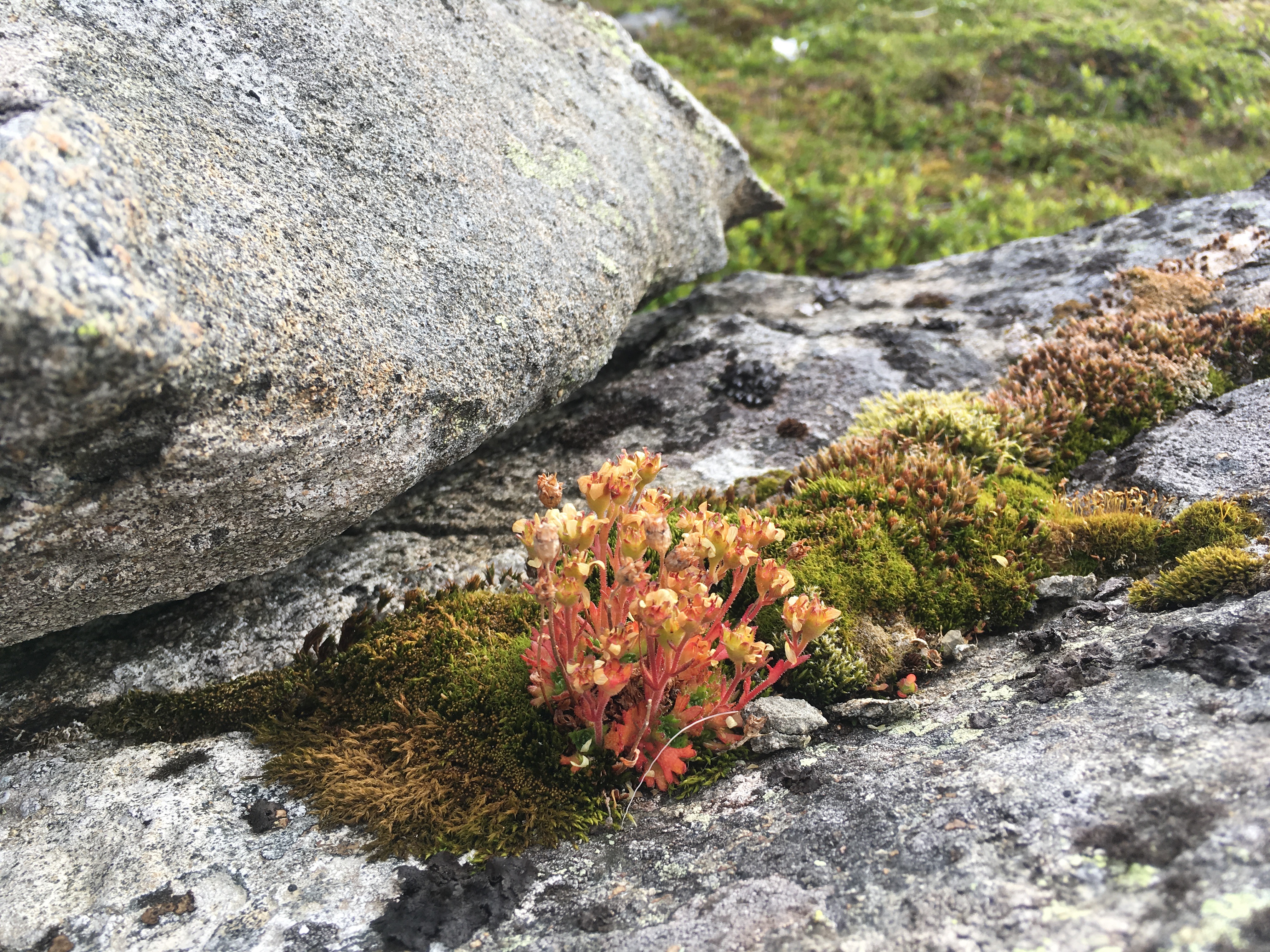
What can one do? What is done is done, and all we can do is pray for our wounded world, and love it. (Yet the politicians and the big companies persist in the utter stupidity of their course, tell us that all they are doing in cutting down forests and digging coal and opening up the wilderness for ‘development’ is fine, all necessary, that we can have a bigger car next year, and make our countries – fill in the blank as you wish – ‘Great Again.’ Do they not see that their families, their children, are every bit as much at risk from the imminent climatic and environmental catastrophe, which could still be mitigated if not averted, as are ours? No power, possession or money can insulate them any more than can poverty protect the poorest.)
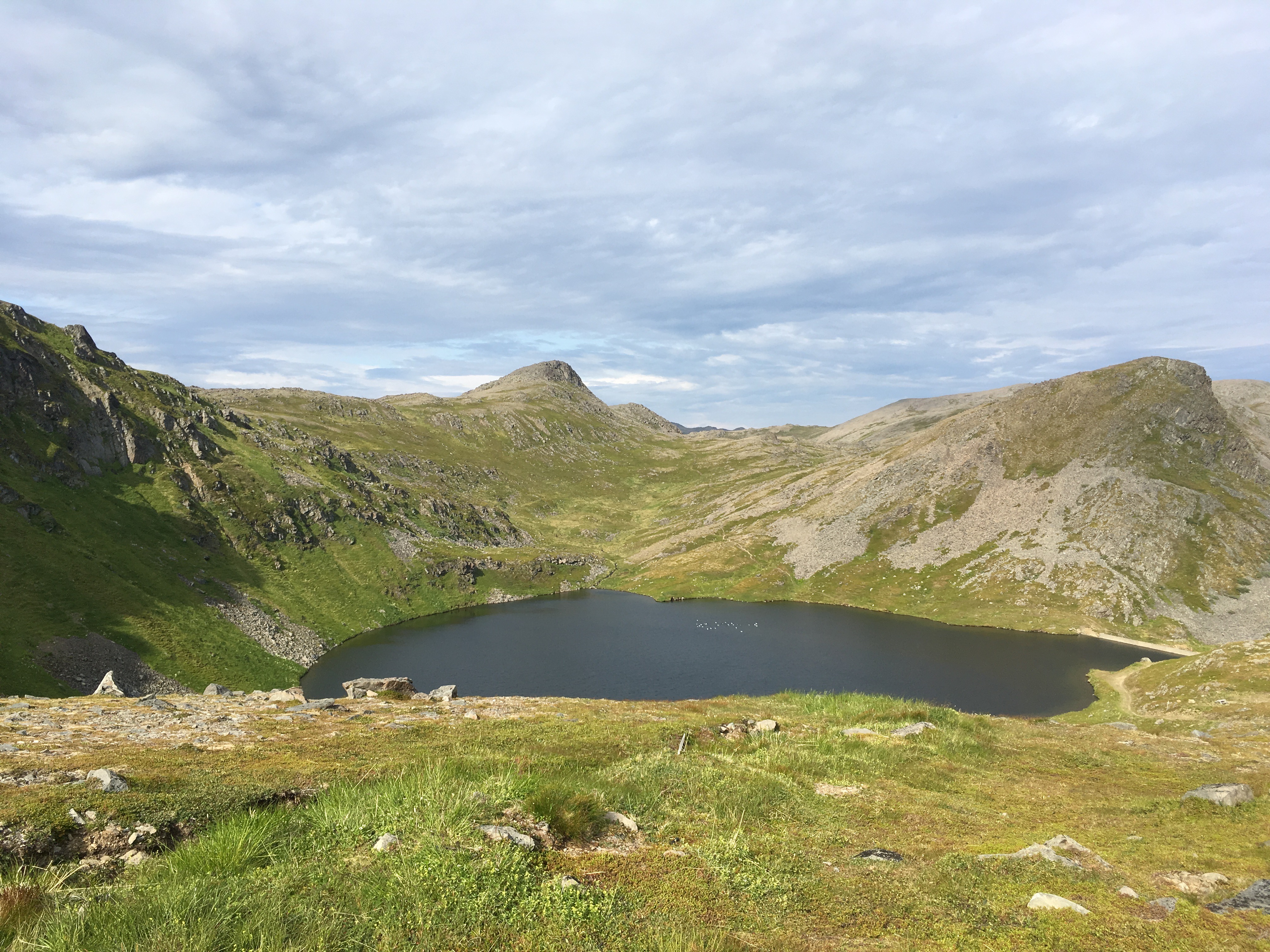
By the harbour in Honningsvåg is a shop selling Saami crafts, reindeer rugs, knives, antlers and so on, to tourists. Nothing wrong with that: I have bought some in the past. But what I have read about the Saami, what I have heard from a Saami I know, seems to sum up so much of what is and has been wrong with our culture, and one day I will write about them – perhaps in my next book. Our culture needs what once it had, and which the Saami still have: a sense of a world where everything has meaning, everything affects everything else, where our modern definition of life – or, to coin a word, aliveness – might be far too narrow. But whatever the truth of that, one thing is certain: we are recognising – and it may be too late – that we are not the only intelligent species on this wonderful planet, that everything does indeed connect with everything else, and that everything is precious, unique, fragile – and threatened.

